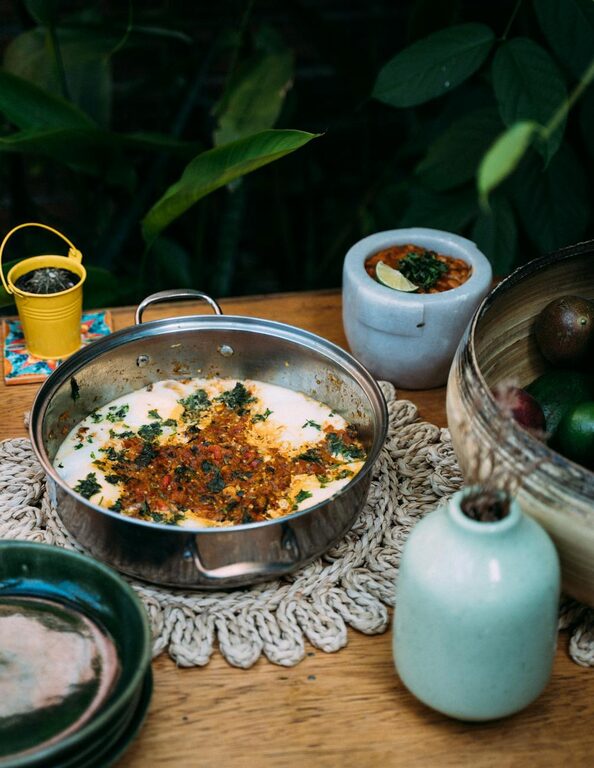When it comes to cooking at home, pantry staples are often the unsung heroes of a well-stocked kitchen. Having a collection of versatile ingredients on hand means you can prepare meals quickly, save money, and avoid last-minute trips to the grocery store. Planning meals using pantry staples is a smart strategy that helps you take advantage of what you already have and makes cooking less stressful.
In this post, we’ll explore how to plan meals from pantry staples, suggest some key ingredients to keep stocked, and share practical tips for creating flavorful, balanced meals.
Why Plan Meals Around Pantry Staples?
Using pantry staples as the foundation of your meal planning offers several benefits:
– Convenience: You can whip up meals with minimal shopping.
– Cost Savings: Pantry staples are often inexpensive and have a long shelf life.
– Less Food Waste: Planning meals around ingredients you already have reduces waste.
– Flexibility: Staples like grains, canned goods, and spices can be combined in countless ways.
Essential Pantry Staples to Keep on Hand
Before diving into meal planning, it’s helpful to know which staples serve as your kitchen’s building blocks. Here are some categories and examples to consider:
Grains and Legumes
– Rice (white, brown, or specialty varieties)
– Pasta (various shapes)
– Quinoa or couscous
– Lentils (green, red, brown)
– Dried or canned beans (black beans, chickpeas, kidney beans)
Canned and Jarred Goods
– Canned tomatoes (diced, crushed, or sauce)
– Coconut milk
– Canned tuna or salmon
– Broth or stock (chicken, vegetable, beef)
– Olives, pickles, or capers
Baking and Cooking Essentials
– Flour (all-purpose, whole wheat)
– Sugar (white, brown)
– Baking powder and baking soda
– Cooking oils (olive oil, vegetable oil)
– Vinegars (apple cider, balsamic, white)
Spices and Seasonings
– Salt and pepper
– Garlic powder, onion powder
– Dried herbs (oregano, thyme, basil)
– Chili flakes or powder
– Ground cumin, paprika
Other Basics
– Nut butters (peanut, almond)
– Honey or maple syrup
– Soy sauce or tamari
– Mustard
Step-by-Step Guide to Planning Meals From Pantry Staples
Step 1: Take Inventory of Your Pantry
Start by checking what you already have. Make a list or take photos of your staples. Note quantities and expiration dates. This helps prevent buying duplicates and prompts you to use older ingredients first.
Step 2: Choose a Meal Framework
Think about the type of meals you want to create. Typically, a well-rounded meal includes:
– A protein source
– A carbohydrate or grain
– Vegetables or fruit
– Flavorings or sauces
For example, a simple meal might be rice (carb), canned beans (protein), sautéed frozen vegetables, and a sauce made from canned tomatoes and spices.
Step 3: Create a Menu Using Pantry Items
Using your list, brainstorm meal ideas. Here are some example combinations:
– Pasta with tomato sauce and canned tuna: Use dried pasta, canned tomatoes, garlic powder, and canned tuna. Add herbs for flavor.
– Lentil curry: Cook lentils with coconut milk, canned tomatoes, curry powder or cumin, and serve with rice.
– Chickpea salad: Combine canned chickpeas, olive oil, vinegar, spices, and any fresh or frozen veggies.
– Rice and beans: Classic combination flavored with garlic, onion powder, and chili flakes.
Step 4: Supplement with Fresh or Frozen Produce
While pantry staples form the base, fresh or frozen vegetables and fruits add freshness and nutrition. Plan to add items like onions, garlic, carrots, leafy greens, or frozen peas to your meals.
Step 5: Batch Cook and Store
To save time, cook larger portions of pantry-based meals. Store leftovers in airtight containers for lunches or quick dinners later in the week.
Tips for Making Meals Taste Great With Pantry Ingredients
– Use herbs and spices generously: They transform simple ingredients into flavorful dishes.
– Add acidity: A splash of vinegar, lemon juice, or a dollop of yogurt brightens flavors.
– Balance textures: Add crunchy nuts or fresh veggies to soft grains and beans.
– Experiment with international cuisines: Many pantry staples are used worldwide; try making Mexican rice and beans, Italian pasta dishes, or Indian lentil dals.
– Don’t forget salt and fat: Even a little butter or oil and seasoning can elevate a dish.
Sample Meal Plan Using Pantry Staples
| Day | Meal | Pantry Components | Fresh Additions |
|———–|—————————————|——————————————|———————————-|
| Monday | Spaghetti with tomato garlic sauce | Pasta, canned tomatoes, garlic powder | Fresh basil, onion |
| Tuesday | Lentil and coconut curry with rice | Lentils, coconut milk, rice, spices | Frozen spinach |
| Wednesday | Chickpea salad | Canned chickpeas, olive oil, vinegar | Cucumber, tomatoes |
| Thursday | Tuna and bean salad | Canned tuna, canned beans, mustard | Lettuce, lemon |
| Friday | Rice and black beans with chili | Rice, canned black beans, chili flakes | Fresh cilantro, avocado if desired |
Final Thoughts
Planning meals around pantry staples is an efficient and creative way to feed yourself and your family. It encourages thoughtful use of ingredients, helps you save money, and opens doors to new flavor combinations. By taking inventory, deciding on meal components, and mixing staples with fresh additions, you’ll find cooking from the pantry both enjoyable and satisfying.
So next time you open your pantry, think of it as a treasure trove full of cooking possibilities waiting to be explored!

